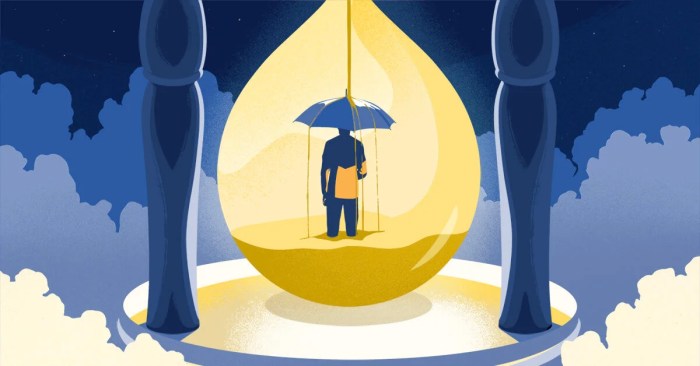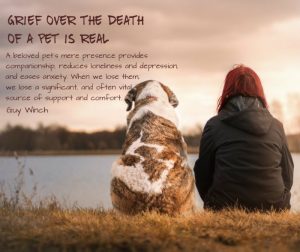
Death anxiety and how to manage it is a topic often shrouded in silence, yet it’s a universal human experience. Understanding the roots of this anxiety – whether stemming from personal experiences, cultural beliefs, or existential questions – is crucial to developing effective coping mechanisms. This exploration delves into the psychological and emotional aspects of death anxiety, offering practical strategies and insights to navigate this complex emotional landscape.
We will examine various coping strategies, from mindfulness practices and therapeutic interventions to the role of spirituality and the pursuit of meaning and purpose in life. By understanding the stages of grief and the impact of cultural perspectives on death, we can foster a healthier relationship with mortality and find solace in the face of uncertainty. The journey towards accepting mortality is a personal one, and this guide aims to provide tools and resources to empower individuals on their path.
Understanding Death Anxiety
Death anxiety, the fear of death or dying, is a complex human experience with significant psychological and emotional dimensions. It’s a natural response for many, but its intensity and impact vary greatly among individuals. Understanding its roots and manifestations is crucial for developing effective coping strategies.
Psychological and Emotional Aspects of Death Anxiety
Death anxiety isn’t simply a rational fear of the unknown; it’s interwoven with deeper psychological and emotional processes. The fear itself can trigger feelings of helplessness, vulnerability, and existential dread. It can be accompanied by intense sadness, anger, or even denial. Furthermore, the anticipation of death can exacerbate pre-existing anxieties and depression, creating a vicious cycle of fear and distress.
The psychological impact often manifests as difficulty concentrating, sleep disturbances, and increased irritability. Emotionally, individuals may experience a sense of loss of control, a profound sense of isolation, and a struggle with their own mortality.
Factors Contributing to Death Anxiety
Several factors contribute to the intensity of death anxiety. Age plays a significant role, with older adults often facing more direct confrontation with their mortality. Personal experiences, such as the death of loved ones or near-death experiences, can profoundly shape an individual’s perception of death and increase anxiety levels. Cultural beliefs and religious perspectives also influence how individuals cope with and perceive the concept of death.
Some cultures emphasize the afterlife and spiritual continuity, offering comfort, while others may focus on the finality of death, leading to heightened anxiety. Furthermore, personality traits, such as neuroticism and a tendency toward negative thinking, can predispose individuals to greater levels of death anxiety.
Manifestations of Death Anxiety
Death anxiety manifests differently in individuals. Some might experience physical symptoms like increased heart rate, shortness of breath, or digestive issues. Others might withdraw socially, becoming isolated and avoiding conversations about death or dying. Some may engage in excessive risk-taking behaviors as a way to confront their fear, while others may become overly cautious and avoid potentially dangerous activities.
Behavioral changes, such as increased substance use or compulsive behaviors, might also be observed. Cognitive manifestations can include intrusive thoughts about death, recurring nightmares, and difficulty concentrating.
Types of Death Anxiety
| Type | Description | Primary Focus | Common Manifestations |
|---|---|---|---|
| Existential Anxiety | Fear of the unknown and the meaninglessness of life in the face of death. | The lack of meaning and purpose after death. | Feelings of nihilism, despair, and a sense of purposelessness. |
| Fear of the Dying Process | Anxiety centered on the physical pain, suffering, and loss of control associated with the dying process. | The physical and emotional aspects of death. | Fear of pain, loss of dignity, and dependence on others. |
| Fear of the Afterlife (or lack thereof) | Concerns about what happens after death, whether it be heaven, hell, or nothingness. | Religious or spiritual beliefs and the uncertainty of the afterlife. | Religious doubt, spiritual questioning, and fear of judgment. |
| Fear of Loss and Separation | Anxiety stemming from the separation from loved ones and the disruption of relationships caused by death. | The impact of death on loved ones and relationships. | Grief, sadness, and feelings of abandonment. |
Coping Mechanisms for Death Anxiety
Death anxiety, the fear of death or the dying process, is a common human experience. While some level of anxiety is normal, excessive fear can significantly impact mental well-being and daily life. Fortunately, various coping mechanisms can help manage and reduce this anxiety, allowing individuals to live more fully in the present.
Mindfulness Techniques for Managing Death Anxiety
Mindfulness practices, such as meditation and deep breathing exercises, offer effective strategies for managing death anxiety. By focusing on the present moment, these techniques help to reduce rumination on the future and the fear of the unknown. Regular mindfulness practice can cultivate a sense of calm and acceptance, allowing individuals to approach thoughts about death with greater equanimity. For example, a guided meditation focusing on the breath can help ground an individual experiencing anxiety, shifting their attention away from fearful thoughts.
Similarly, mindful body scans can help individuals connect with their physical sensations, providing a sense of grounding and presence.
The Role of Therapy and Counseling
Therapy, particularly cognitive behavioral therapy (CBT) and existential therapy, provides a structured approach to addressing death anxiety. CBT helps identify and challenge negative thought patterns and beliefs related to death, replacing them with more balanced and realistic perspectives. Existential therapy explores the meaning and purpose of life in the face of mortality, helping individuals find a sense of acceptance and meaning.
A therapist can provide a safe and supportive space for exploring these anxieties, developing coping strategies, and building resilience. For instance, a therapist might help a patient reframe their catastrophic thinking about death by focusing on the present and the value of their current life.
Spiritual and Religious Practices for Finding Peace with Mortality
Many spiritual and religious traditions offer frameworks for understanding and accepting death. Beliefs in an afterlife, reincarnation, or spiritual continuity can provide comfort and reduce anxiety surrounding death. Rituals, prayer, and community support within these traditions can offer a sense of meaning and purpose, helping individuals find peace with mortality. For example, participation in religious services or engaging in personal prayer can provide solace and a sense of connection to something larger than oneself.
The sense of belonging and shared belief systems within a religious community can also be a significant source of support during times of anxiety.
A Step-by-Step Self-Help Plan for Managing Death Anxiety
Managing death anxiety effectively often requires a proactive approach. A self-help plan can provide structure and guidance in this process.
- Identify and Acknowledge Your Anxiety: Begin by honestly assessing your level of death anxiety. What specific aspects of death trigger your fear? Journaling can be a helpful tool in this process.
- Challenge Negative Thoughts: Identify and challenge any negative or catastrophic thoughts about death. Are these thoughts based on facts or assumptions? Try to reframe these thoughts in a more realistic and balanced way.
- Practice Mindfulness: Incorporate daily mindfulness practices, such as meditation or deep breathing exercises, into your routine. Even a few minutes a day can make a difference.
- Engage in Meaningful Activities: Focus on activities that bring you joy, purpose, and a sense of fulfillment. This can help shift your focus away from anxiety and toward the present moment.
- Seek Support: Connect with friends, family, or a support group. Sharing your feelings with others can provide comfort and reduce feelings of isolation.
- Consider Professional Help: If your anxiety is significantly impacting your daily life, consider seeking professional help from a therapist or counselor.
The Role of Meaning and Purpose
Facing our mortality can be daunting, but the search for meaning and purpose in life offers a powerful antidote to death anxiety. A life rich in purpose provides a framework that transcends the limitations of our lifespan, offering a sense of lasting impact and fulfillment that reduces the fear of the unknown. This sense of meaning can shift our focus from the finite nature of existence to the enduring value we create during our time here.A life infused with meaning naturally mitigates death anxiety.
When we feel deeply connected to something larger than ourselves – a cause, a community, a creative pursuit – our sense of self expands beyond our physical existence. This expanded sense of self diminishes the fear of death because our essence, in a way, continues beyond our physical form through the impact we’ve made and the legacy we leave behind.
This isn’t about avoiding the reality of death, but rather about enriching life so that death becomes less of a terrifying end and more of a natural conclusion to a meaningful journey.
Activities that Foster Meaning and Purpose
Engaging in activities that provide a sense of meaning and purpose is crucial in managing death anxiety. These activities can vary widely depending on individual interests and values, but the common thread is a feeling of contribution and connection. Meaningful activities help us feel a sense of accomplishment and satisfaction, shifting our focus away from the fear of death and toward the present moment and the impact we have on the world.
The Impact of Legacy and Contribution
The knowledge that we have made a positive contribution to the world, that we have left a legacy, significantly reduces the fear of death. This legacy isn’t necessarily about grand achievements; it’s about the ripple effect of our actions – the relationships we nurtured, the kindnesses we showed, the skills we shared, the positive impact we had on our communities.
Leaving a positive mark, however small, provides a sense of continuity and lasting value that transcends the limitations of a finite lifespan. Knowing that our actions will continue to resonate long after we are gone can bring a profound sense of peace and acceptance.
Potential Life Goals for Increased Fulfillment
Finding fulfilling life goals can be instrumental in mitigating death anxiety. These goals should be personally meaningful and reflect individual values and passions. The following list provides examples of goals that can contribute to a sense of purpose and reduce fear of death:
- Develop a skill or talent that brings joy and contributes to the community.
- Strengthen existing relationships and build new ones that bring meaning and support.
- Contribute to a cause or organization that aligns with personal values.
- Create something lasting, whether it’s a work of art, a piece of writing, or a business.
- Mentor or guide others, sharing knowledge and experience.
- Travel and explore the world, broadening perspectives and creating lasting memories.
- Pursue personal growth through education, therapy, or self-reflection.
- Spend quality time with loved ones, creating cherished memories.
Death, Dying, and the Acceptance Process

Understanding how we approach death and dying is crucial in managing death anxiety. The process is deeply personal and influenced by individual beliefs, experiences, and support systems. Acknowledging the stages involved and fostering open communication can significantly ease the burden for both the dying individual and their loved ones.
Kübler-Ross’ Stages of Grief and Dying
Elisabeth Kübler-Ross’s five stages of grief—denial, anger, bargaining, depression, and acceptance—provide a framework for understanding the emotional journey individuals may experience when facing death, either their own or that of a loved one. It’s important to remember that these stages are not linear; individuals may experience them in a different order, revisit stages, or not experience all of them.
The model offers a helpful guide, not a rigid prescription. It highlights the complexity of the emotional landscape surrounding mortality.
The Importance of Open Communication About Death and Dying
Open and honest conversations about death and dying are essential for fostering a sense of peace and closure. These conversations allow individuals to express their fears, wishes, and concerns, facilitating emotional processing and reducing anxiety. Open communication also allows loved ones to provide meaningful support and to understand the dying person’s needs and preferences, potentially easing the burden of grief later on.
This includes discussing end-of-life care options, funeral arrangements, and expressing final sentiments.
Practical Advice for Supporting Someone Facing Death or Grieving a Loss
Supporting someone facing death or grieving a loss requires empathy, patience, and understanding. Practical support can include offering help with daily tasks, providing emotional companionship, actively listening without judgment, and simply being present. Respecting the individual’s wishes and allowing them to express their emotions without pressure is crucial. Connecting them with appropriate resources, such as grief counseling or support groups, can also be invaluable.
Avoid offering unsolicited advice or minimizing their feelings. Instead, focus on validating their experience and offering unwavering support.
A Visual Representation of the Emotional Journey of Accepting Mortality
Imagine a winding path ascending a mountain. The path begins in a dark, shadowy valley representing denial and fear. As the path climbs, it passes through turbulent, rocky terrain representing anger and bargaining – sharp turns and unexpected drops mirroring the emotional rollercoaster. Further up, the path enters a quieter, misty area, reflecting the sadness and depression of confronting mortality.
Finally, the path reaches a sunlit summit, a plateau offering a panoramic view. This expansive vista symbolizes acceptance—a place of peace and clarity, where the vastness of life and the inevitability of death coexist. The journey is not easy, but the summit offers a perspective that transcends the fear of the unknown.
The Impact of Culture and Society on Death Anxiety: Death Anxiety And How To Manage It

Death anxiety, the fear of death and dying, isn’t a universal experience; its intensity and manifestation are significantly shaped by cultural and societal factors. Different societies hold vastly different beliefs about the afterlife, the nature of death itself, and the appropriate ways to mourn and remember the deceased. These beliefs profoundly influence how individuals perceive and cope with their own mortality.Cultural attitudes towards death and dying vary widely across the globe.
Some cultures embrace death as a natural part of the life cycle, viewing it as a transition to another realm or a reunion with ancestors. Funerals and mourning rituals in these cultures may be celebratory, focusing on the life lived rather than the sorrow of loss. In contrast, other cultures may view death with fear and apprehension, associating it with negativity, punishment, or the unknown.
These societies may emphasize avoiding discussion of death, suppressing grief, or employing rituals designed to ward off evil spirits associated with the deceased. The contrast between a celebratory funeral procession in Mexico’s Day of the Dead celebrations and a quiet, private burial in some Eastern Asian cultures exemplifies this diversity.
Cultural Attitudes Towards Death and Dying
Cultural norms profoundly impact how individuals perceive death. Societies that openly discuss death and dying, incorporating it into their storytelling and folklore, may foster a more accepting attitude towards mortality. Conversely, societies that actively avoid the topic may cultivate a climate of fear and anxiety surrounding death. For instance, the open acceptance of death as a natural part of life in some indigenous cultures contrasts sharply with the often-avoided discussions surrounding death in some Western societies, contributing to differing levels of death anxiety.
This difference in cultural norms shapes the way individuals process and cope with their own mortality and that of others.
Societal Norms and Beliefs Influence on Death Perception
Societal norms and beliefs significantly influence how individuals perceive and react to death. Religions, for example, play a crucial role, offering various perspectives on the afterlife and the meaning of death. Belief in reincarnation, heaven, or hell can significantly affect death anxiety levels. Similarly, societal views on grief and mourning influence how individuals express their emotions and cope with loss.
Cultures that encourage open expressions of grief may allow for healthier processing of death, while cultures that suppress grief may lead to prolonged anxiety or unresolved trauma. The difference in public mourning practices between, say, Irish wake traditions and more reserved mourning customs in some East Asian cultures demonstrates this.
The Role of Media and Popular Culture in Shaping Perceptions of Death
Media and popular culture play a powerful role in shaping societal perceptions of death. Movies, television shows, and video games often portray death in sensationalized or unrealistic ways, potentially exacerbating death anxiety in some individuals. The constant exposure to violent deaths or gruesome depictions in the media can desensitize some, but also trigger heightened anxiety in others, particularly those already predisposed to death anxiety.
Conversely, media can also serve a valuable function in normalizing discussions around death and dying, promoting open conversations, and providing educational resources.
Cultural Rituals and Traditions in Coping with Death and Loss
Cultural rituals and traditions provide important coping mechanisms for dealing with death and loss. Funerals, memorial services, and other commemorative practices offer opportunities for communal grieving, social support, and the affirmation of shared beliefs. These rituals provide a structured framework for navigating the emotional complexities of death, helping individuals to make sense of loss and find solace in shared experiences.
The elaborate mourning rituals found in many cultures, including the Shiva in Judaism or the wake in Irish tradition, serve as examples of how culturally embedded practices facilitate grief processing and offer support networks during times of bereavement.
Addressing Existential Concerns Related to Death
The inevitability of death often triggers profound existential questions that challenge our understanding of life’s meaning and purpose. Confronting mortality can lead to anxiety, but exploring these questions can also foster a deeper appreciation for life and a more meaningful existence. This section delves into common existential concerns surrounding death, offering philosophical perspectives and practical strategies for navigating the inherent uncertainties.
Common Existential Questions Related to Death and the Meaning of Life
Existential anxieties often revolve around fundamental questions about our existence. These inquiries can range from the nature of consciousness and the purpose of life to the possibility of an afterlife and the impact of our actions on the world. Understanding these questions is a crucial first step in addressing the anxieties they generate. Many grapple with the feeling of insignificance in the face of a vast universe, questioning whether their lives hold any lasting value or impact.
Others struggle with the apparent randomness of existence, questioning why things happen as they do, and whether there is a larger plan or purpose guiding events.
Philosophical Perspectives on Mortality and the Afterlife
Various philosophical viewpoints offer diverse perspectives on mortality and the possibility of an afterlife. For example, nihilism posits that life is inherently meaningless, while existentialism emphasizes individual freedom and responsibility in creating meaning. Other philosophies, such as some forms of religious belief, propose the existence of an afterlife or a divine plan that gives life ultimate purpose. Ancient Greek philosophers like Plato explored the concept of the soul’s immortality, contrasting it with the physical body’s demise.
These diverse perspectives highlight the multifaceted nature of human understanding of death and the afterlife, emphasizing the lack of a single definitive answer.
Strategies for Navigating Existential Angst and Finding Comfort in Uncertainty, Death anxiety and how to manage it
Navigating existential angst requires a multifaceted approach. Mindfulness practices, such as meditation, can help individuals to focus on the present moment and reduce anxieties about the future. Engaging in meaningful activities, such as pursuing hobbies, contributing to a cause, or nurturing relationships, can provide a sense of purpose and fulfillment. Therapy, particularly existential therapy, can provide a supportive space to explore these concerns and develop coping strategies.
Furthermore, connecting with others who share similar concerns can foster a sense of community and shared understanding, mitigating feelings of isolation. Accepting the inherent uncertainty of life and death can be a powerful step toward reducing anxiety.
A Structured Approach to Exploring Personal Beliefs and Values Related to Death and Life’s Purpose
A structured approach can help individuals explore their personal beliefs and values concerning death and life’s purpose. This process could involve journaling reflections on personal experiences, values, and beliefs about life, death, and the afterlife. It could also include engaging in conversations with trusted friends, family members, or spiritual advisors. Furthermore, exploring different philosophical and religious perspectives can broaden one’s understanding and potentially lead to a more fulfilling personal philosophy.
Consider creating a personal “life manifesto” – a document outlining one’s values, goals, and how they wish to live their life, considering the finite nature of existence. This exercise can provide a sense of purpose and direction, mitigating anxieties related to mortality.
Ultimately, confronting death anxiety is about embracing life’s fragility and finding meaning in the present moment. By actively engaging with our fears, exploring our values, and fostering connections with others, we can transform our anxieties into opportunities for growth and deeper self-understanding. While the fear of death is inherent to the human condition, the strategies and perspectives explored here offer a roadmap towards navigating this fear and living a more fulfilling life.
General Inquiries
What if my death anxiety is interfering with my daily life?
If your death anxiety significantly impacts your daily functioning, it’s crucial to seek professional help. A therapist can provide personalized strategies and support to manage your anxiety.
Is death anxiety a sign of a mental health condition?
While some level of death anxiety is normal, excessive or debilitating fear may indicate an underlying condition like anxiety disorder or depression. Consult a mental health professional for assessment.
How can I help a loved one struggling with death anxiety?
Offer compassionate listening, validate their feelings, and encourage them to seek professional support. Avoid minimizing their concerns or offering unsolicited advice.
Are there specific medications that can help with death anxiety?
In some cases, medication may be helpful in conjunction with therapy, particularly if anxiety is severe. A psychiatrist can determine if medication is appropriate.





